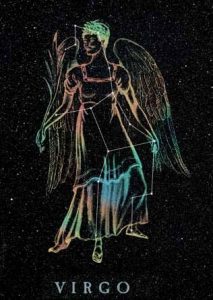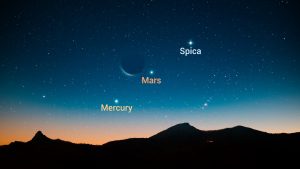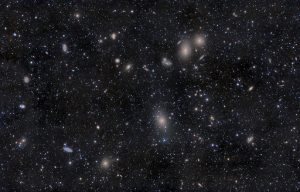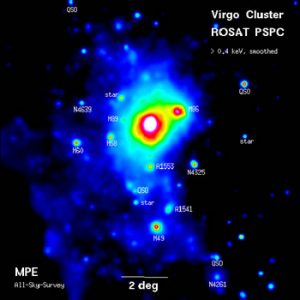47 Virgo: The Constellation
By: Camille Molas
Looking at all my Pressbook contributions, I have always tried to incorporate different aspects of myself in the work. Lately, I have definitely resonated with visual art. However, there’s a huge part of myself that is also devoted to astronomy. The topic on Demeter is the perfect segway into introducing astronomy!
Virgo is well known in astrology!! (I am a Capricorn) But Virgo the Constellation also has a lot of stories to tell and is well connected to Demeter and Persephone. So, I’d like to take this opportunity to also discuss the astronomy behind Virgo.

I found that there are several theories as to who Virgo personifies, it is either Persephone or Demeter. Virgo can best be seen in the sky in May. This corresponds right in the middle of spring, signifying the return of Persephone to Demeter or Demeter herself returning to bless the Earth with agriculture. Regardless, of who Virgo represents exactly many of the characteristics of Virgo are inspired by the myth of Persephone and Demeter.

The brightest star in the Virgo constellation is called Spica. Spica is a bright binary star and the 16th brightest in Earth’s night sky. It is visible not only because of its size but also because of its relatively close distance: it is only about 260 light-years away from Earth (the closest star is Proxima Centauri and is very close at 4.25 light-years). ‘Spica’ comes from the Latin meaning ‘Ear of Grain’ or ‘Ear of Corn’ due to the constellation’s association with agriculture and farming. In many sky charts (like above), Virgo is pictured holding an ear of wheat to symbolize this.
Spica from Earth looks to be a single bluish-white star in an empty region of the sky. But Spica is two stars. The pair are both larger and hotter than our sun, and they’re separated by only 11 million miles, and they are orbiting their common center of gravity in only four days. The two stars in Spica are indistinguishable from each other, even with a telescope, hence why it looks like one star from Earth. The dual nature of this star was revealed only by analysis of its light with a spectroscope, an instrument that splits light into its component colors.
Aside from Spica, the constellation Virgo contains 14 more named stars: Elgafar, Flegetonte, Heze, Kang, Khambalia, Lich, Malmok, Minelauva, Mönch, Porrima, Syrma, Vindemiatrix, Zaniah, and Zavijava.

In the center of the Virgo constellation is the Virgo Cluster that spans 8 degrees across the sky. The Virgo Cluster is a large cluster of galaxies whose center is close to the Virgo constellation and is the largest and nearest galaxy cluster to the Local Group. There are approximately 1300-2000 member galaxies with many as spirals, the cluster is part of the larger Virgo Supercluster, of which the Local Group (where our Milky Way Galaxy is in) is a member. The Virgo cluster has a mass of approximately 100,000 billion solar masses. The cluster also has three identifiable sub-clusters (centered on M87, M86, and M49) and has an irregular distribution of X-ray halo and is therefore probably still in the process of forming.

The mass of the Virgo cluster is so large that the motions of most galaxies in its neighborhood are significantly influenced by it and drawn towards it (the ‘Virgo-centric flow’) due to gravity (think of a bedsheet and put marbles around, the sheet is still flat, but put a bowling ball and then the sheet curves forcing the marbles to go towards the bowling ball). Although the Local Group is currently receding from the cluster, the mass of the Virgo cluster is so high that it is expected that the Local Group will eventually slow down and reverse direction, ultimately joining the cluster.
While science has furthered the narrative of Virgo, it’s impressive to think that these massive objects have a direct relation to Demeter and Persephone.
